The annual vegetable garden
Many planned things grew, some didn't. Many unplanned things grew, too.
On April 29th we put in (the majority of) the vegetable garden. Now, two and a half months later, it’s time for an update. In my previous post I posted an image of the vegetable garden plan. Here, now, is the current state of the garden.

Let’s start with what went well. Generally, things grew! To prep the beds, we (Ioannis, Stavros, and I) tilled the terrace — in multiple attempts, since no previous attempt was deemed adequate, especially if I was involved — and shaped the beds by creating large trenches that could hold water. We then either added layers of compost or amended planting holes for seedlings with compost. I don’t remember why we didn’t do this at the time, but the celery/parsley/carrot/cilantro bed didn’t get compost, and neither did the onions or corn.
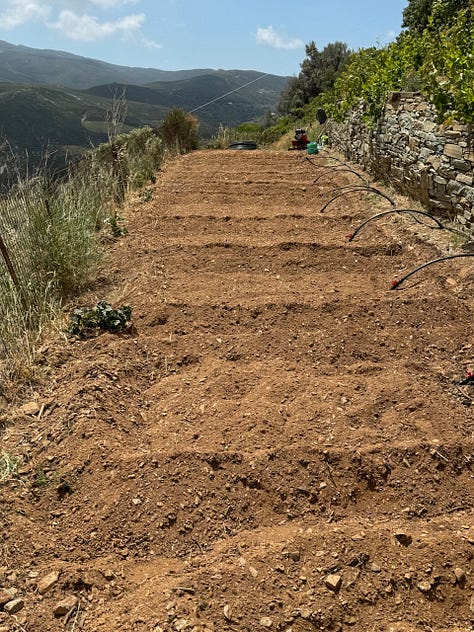
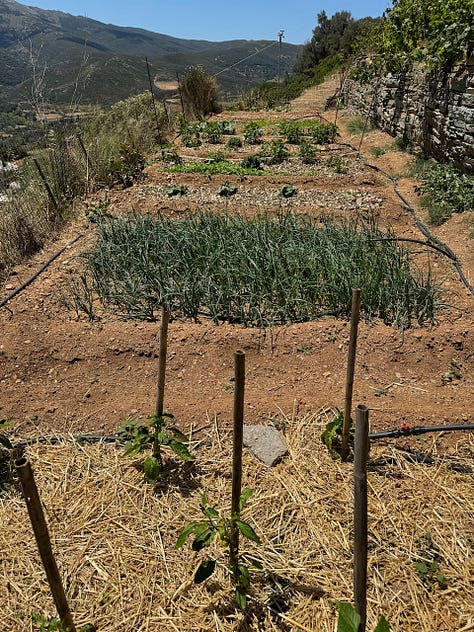
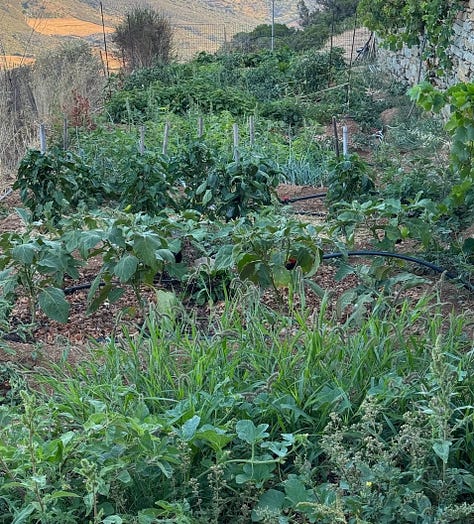
One of the most important things I did was to mulch, i.e., to add a layer of organic matter to the top of the beds once the seedlings were tall enough, in my case straw and wood chips. Mulching fulfills multiple functions at once: by keeping the soil covered it reduces evaporation, reduces the variability in soil temperature, keeps the soil from getting blown away in the wind and eroding over time, and suppresses weeds. It also helps build healthy soil in three different ways: first, by virtue of naturally decomposing over time; second, by allowing microorganisms that are important to soil health to operate closer to the surface (and thus, the bulk of the roots) where it would otherwise be too hot for them; and third, by allowing the soil to stay somewhat aerated, which in turn also allows for more beneficial microbial activity, instead of being topped by a hard sun-baked impermeable clay layer.
Savoula from up the hill in Kalivari generously gave me a few bales of straw, some of which I used to mulch the pepper bed (and some of which I used in the chicken coop). When I started worrying about how to mulch the rest of the beds I met Luea from Palaiopolis, another Swiss permaculture enthusiast on the island. And as it turns out, she has a magical machine, a mobile wood chipper that takes in branches (up to 4cm in diameter) and spits out wood chips. She was generous enough to let me borrow it, so I was able to take care of two things at once: create our magical mulch, while processing all the pruned material from the various overgrown parts of the property that Quinn and I had been cutting back, and that we otherwise wouldn’t have known what to do with. The normal thing to do with pruned material on the island is to create large burn piles. But burn season was over in early May, and even if it wasn’t: sequestering the carbon from the wood in the earth is much better for not just the environment, but for the soil, our growing medium, than blasting it into the atmosphere as CO₂! Win-win instead of lose-lose. Now I just need to remember to finally return the wood chipper…
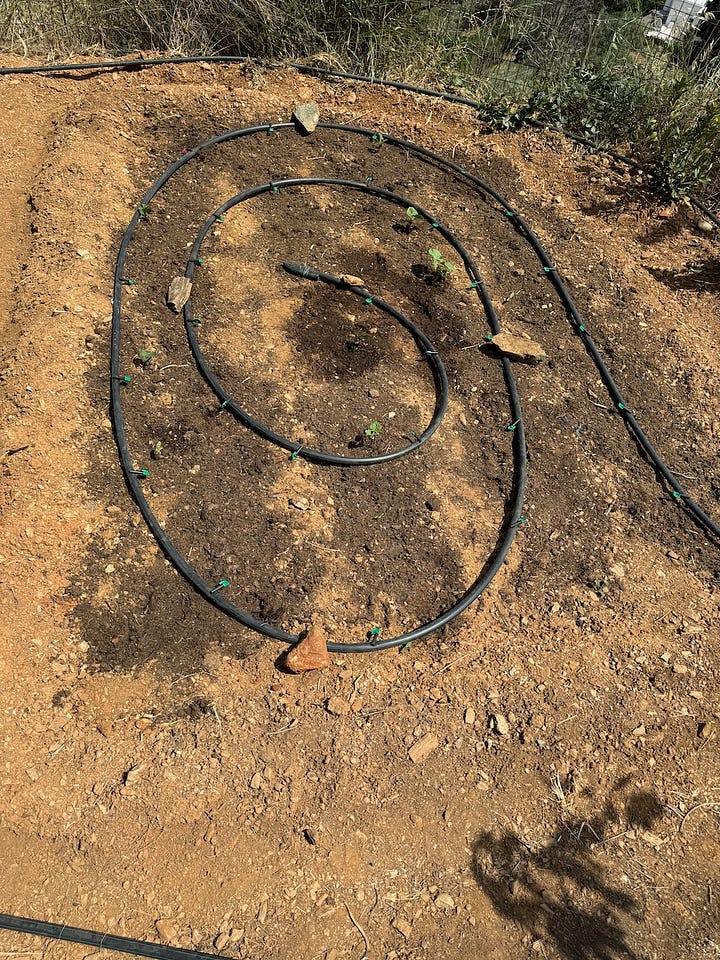
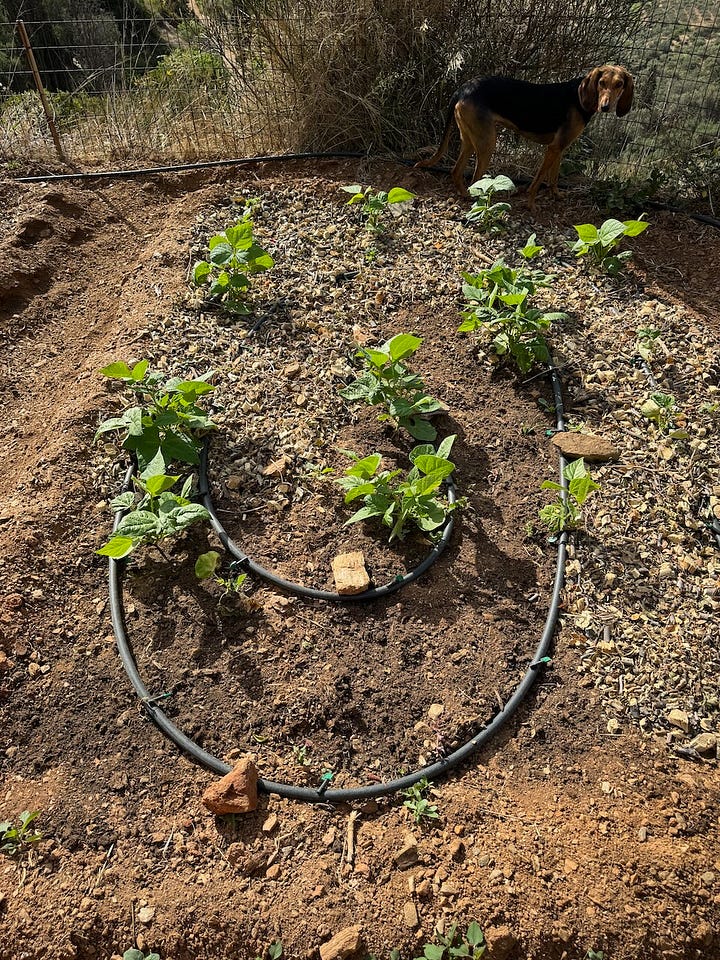
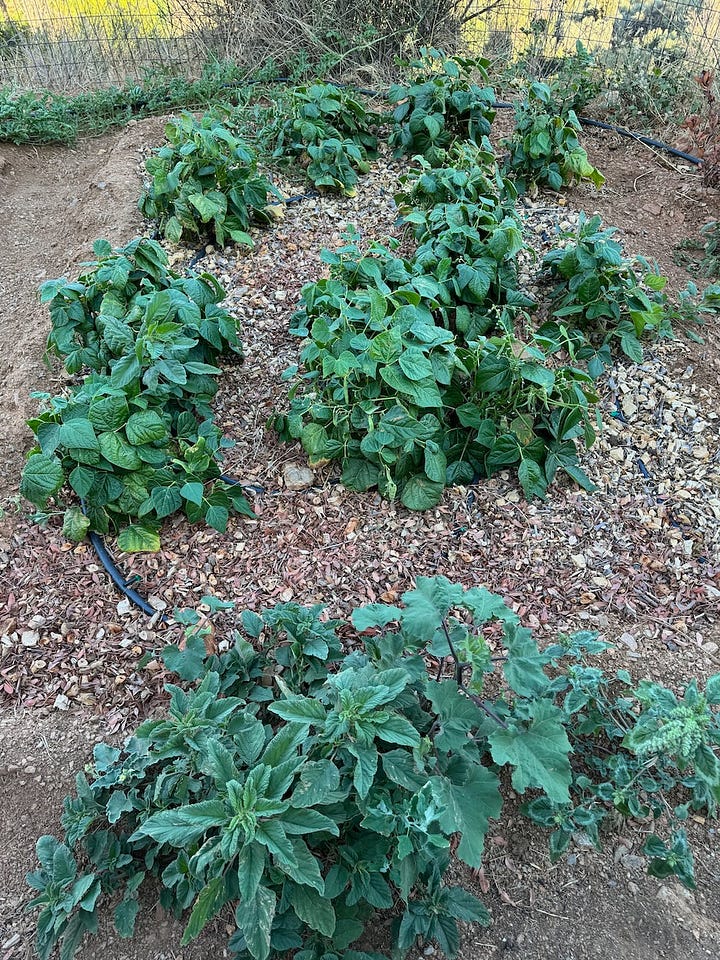
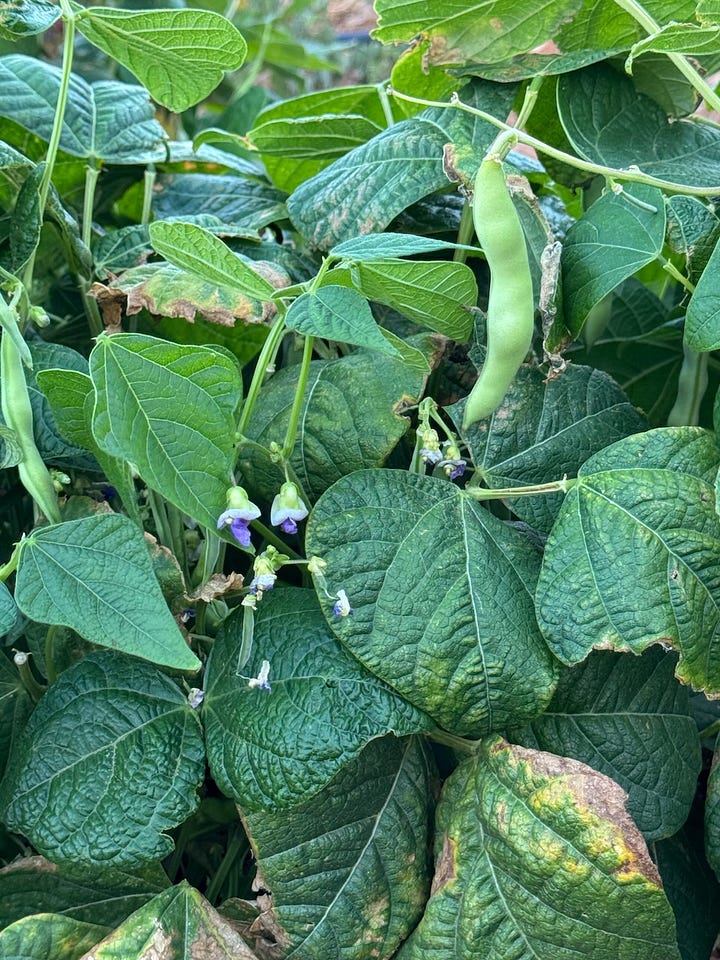
Let’s talk about some of the plants that are doing well. First, the beans! I’ve never grown beans before, and seeing their tiny purple flowers turn into pods is a delight. They’ll still need a while till they’re ready, but they’re doing well. They didn’t all germinate, and in retrospect I should have just immediately put new seeds in when they weren’t coming up. Now, instead, I just interplanted some gourd seedlings, from seeds I got from Giannis in Kalivari — locally adapted!
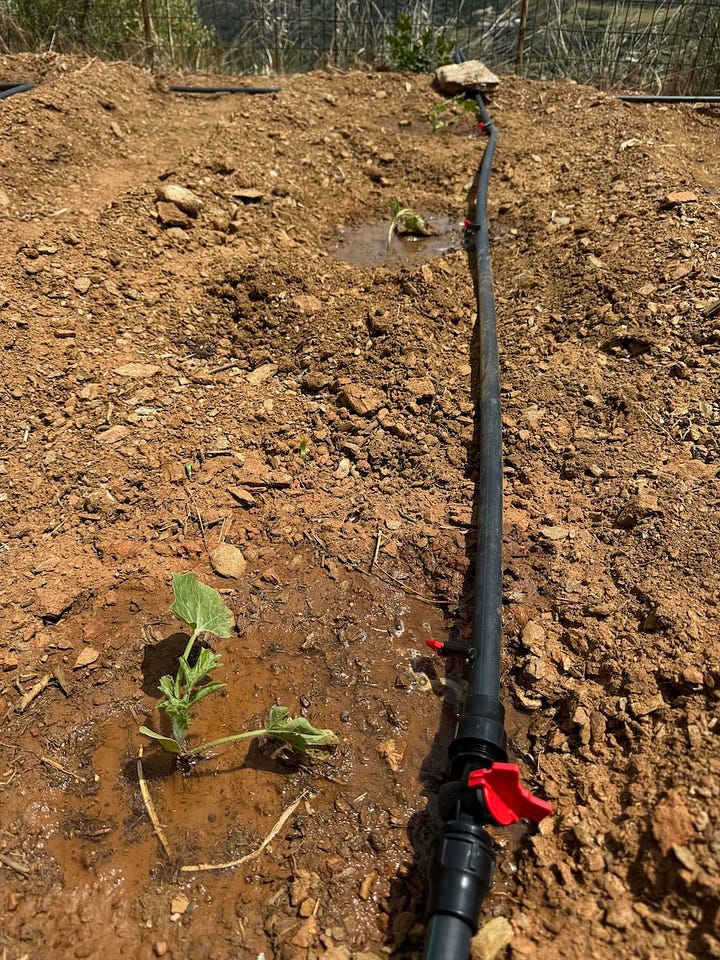
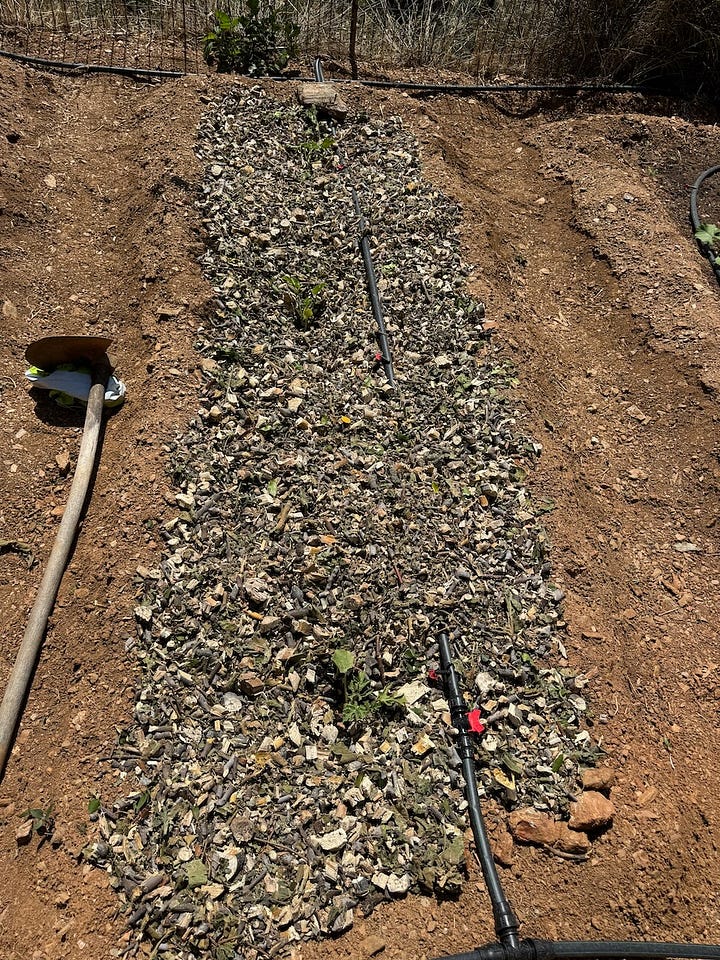
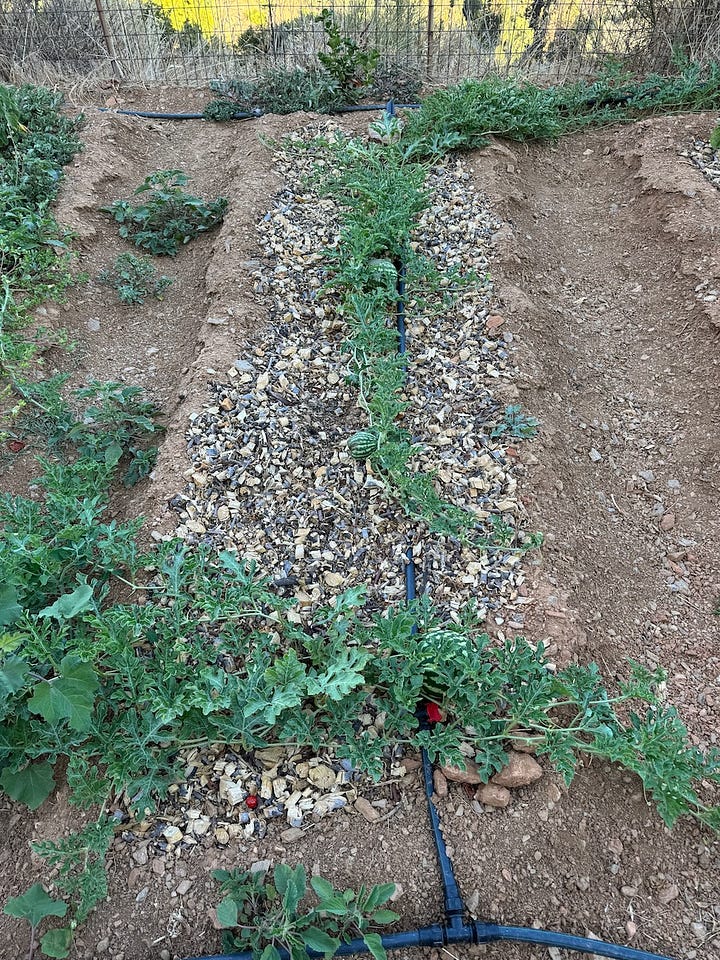
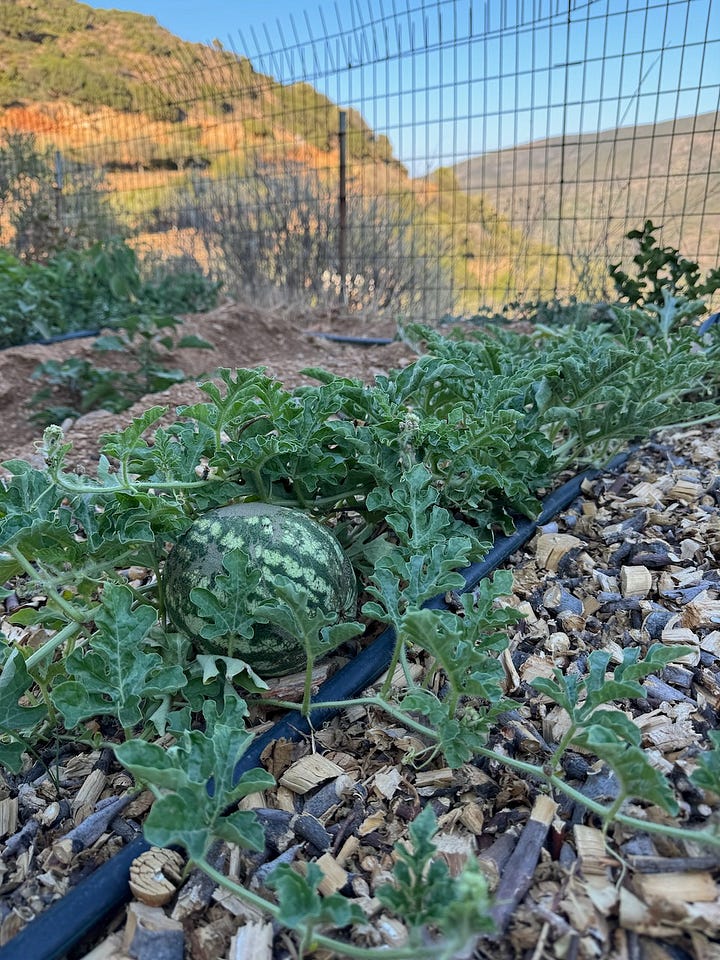
The watermelons also still need a little longer. One of them didn’t survive the harsh start in the exposed soil, and I still remember how relieved I was to finally put the protective layer on. Now there are already 6 melons ranging from tennis-ball-sized to child-head-sized, and they’re crawling all over the paths. Especially for such a water-intense crop, I’m glad to have the mulch layer. When we had a heat wave a month ago, with temperatures at 40C/104F for three days, I gave the whole terrace a deep watering in the early morning of the first day. After three days I checked the soil and while the woods chips were dry, the soil itself was still moist. Magic.
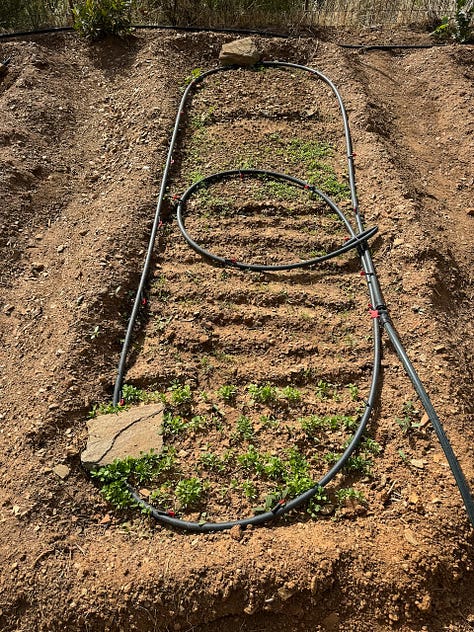
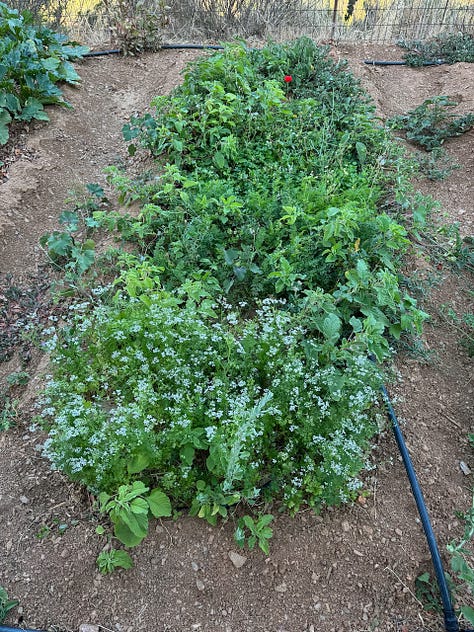
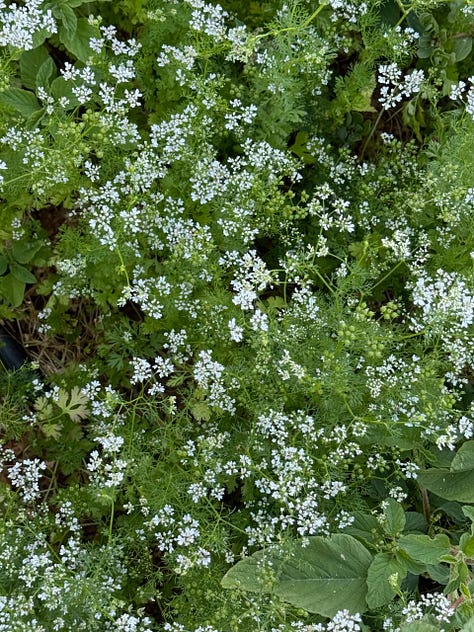
The third bed was supposed to be the big apiaceae bed — celery, parsley, carrots, and cilantro. The cilantro did very well (though in the end I couldn’t keep it from going to flower), the carrots I doubt are getting up to much in the unmulched clay soil full of rocks (but I’ll check soon), the parsley is tender and delicious, and the celery never materialized. In its stead, a number of different weeds came up. I don’t remember who said “Weeds only exist in the space between your ears.” In any case, I’ve let the χόρτα/weeds grow and harvest them periodically because they yield excellent boiled greens with olive a oil and a bit of lemon. This is the strategy I used throughout the garden where what I planted didn’t grow — the corn rows were simply repurposed as βλίτα/vlita patches. I also let the edible weeds live in the paths because at least that way the soil is somewhat covered. (I don’t have enough wood chips to mulch the paths yet.)
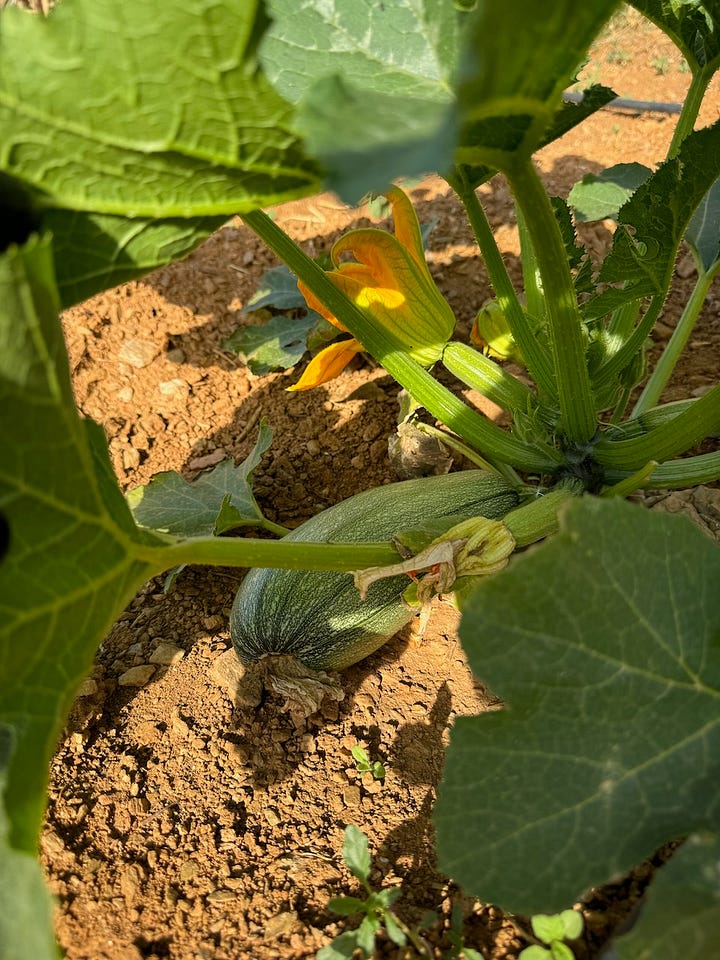

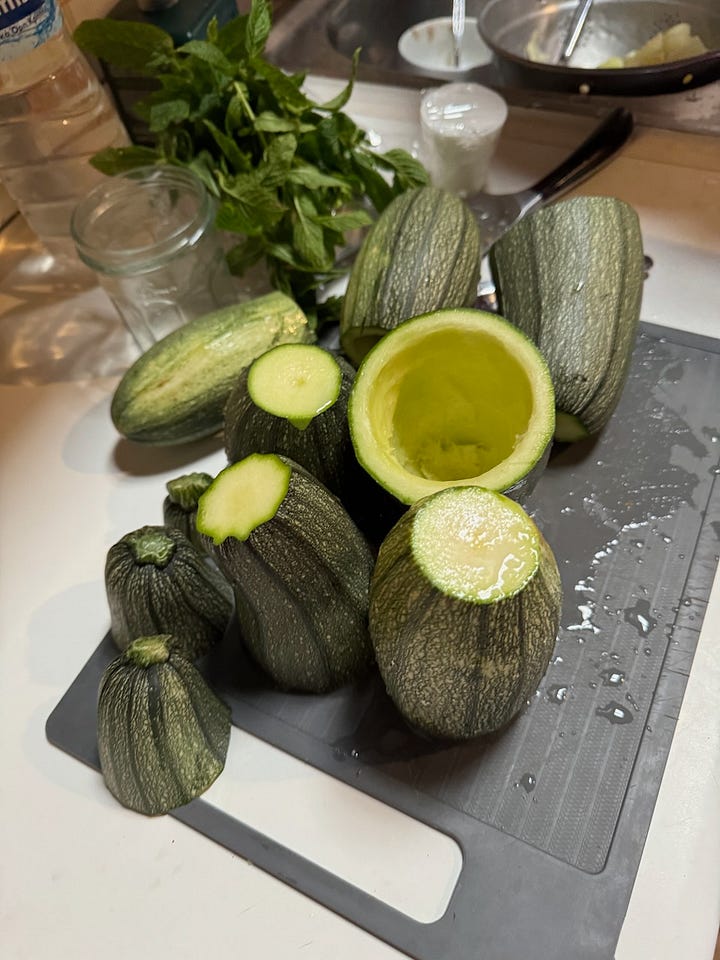
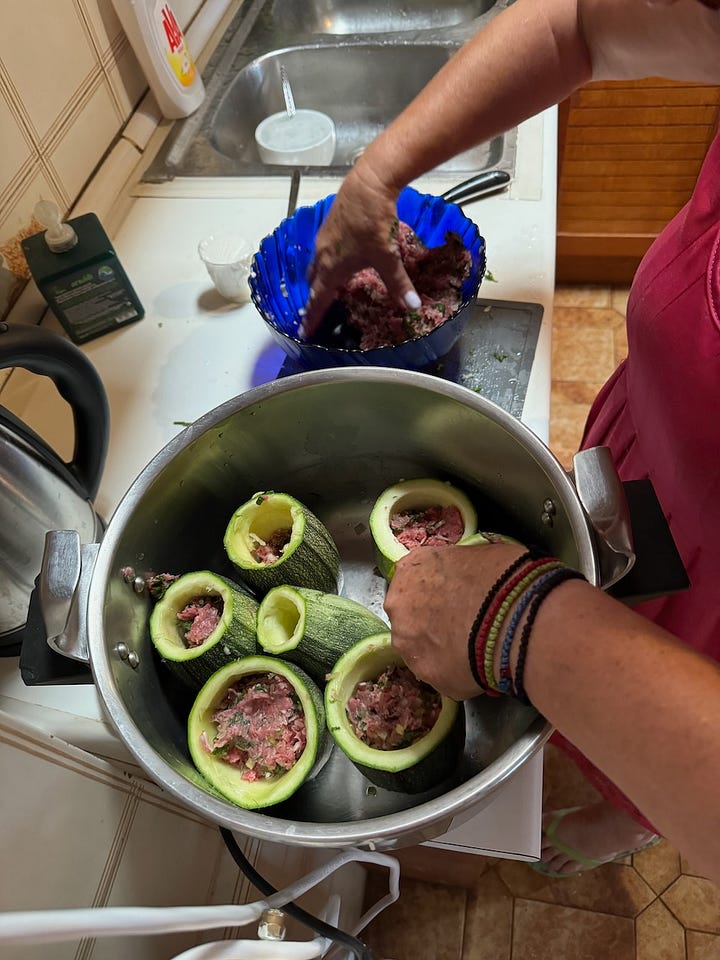
Zucchini, what can you say about zucchini. It’s a forgiving plant and always produces more than you need. The first harvest consisted of giant zucchinis. Maria came over and showed me how to turn them into γεμιστά/gemista (stuffed zucchini), one of the Greek classics. The smaller ones I’ve turned into many plates of zucchini pasta, always topped with some fresh lemon from our lemon tree.
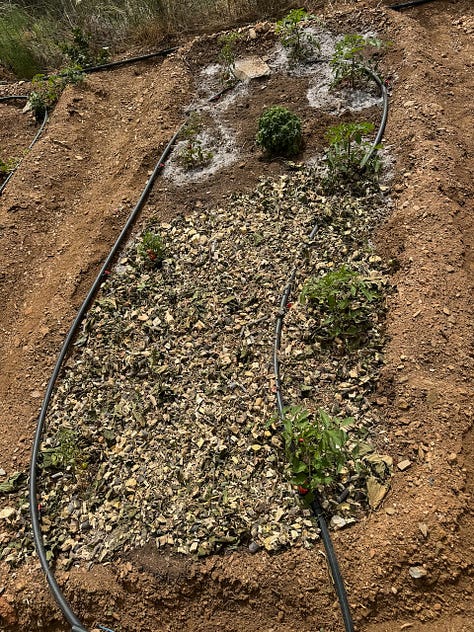
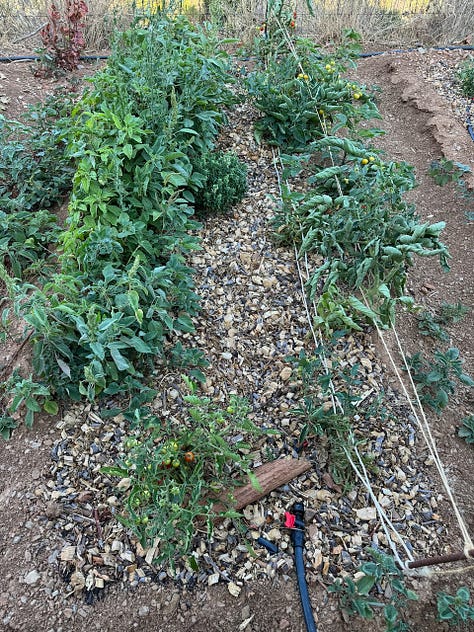
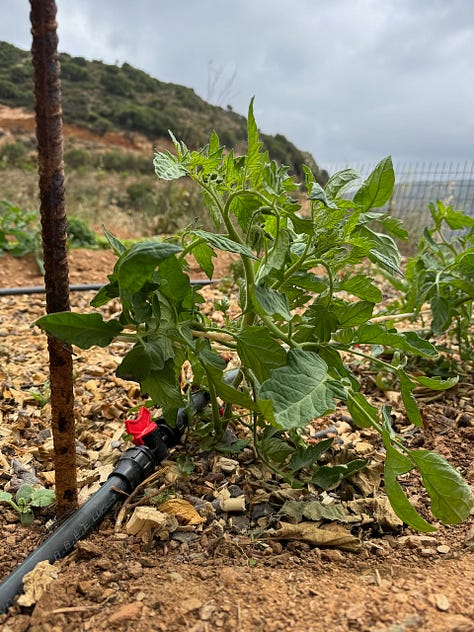
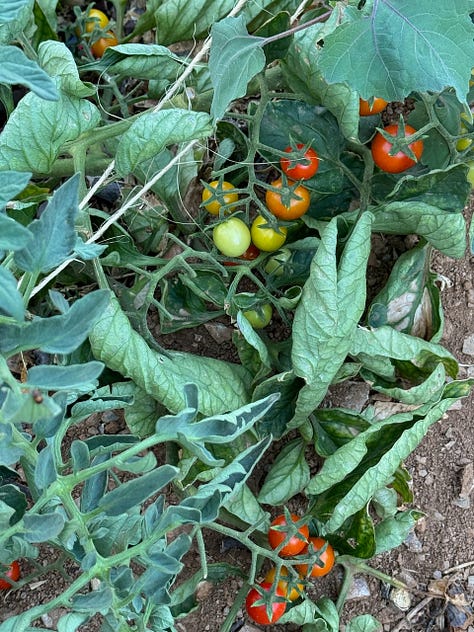
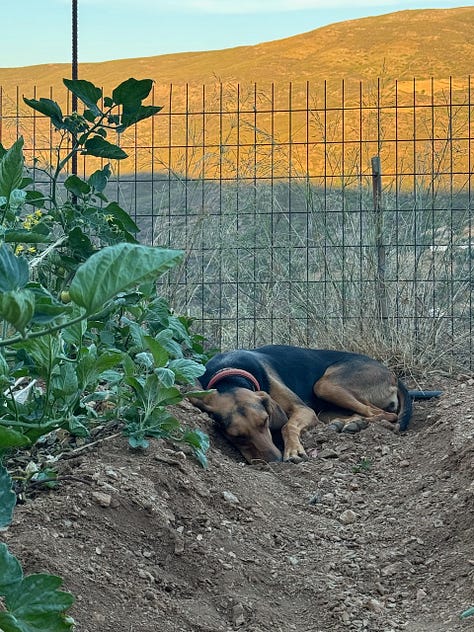
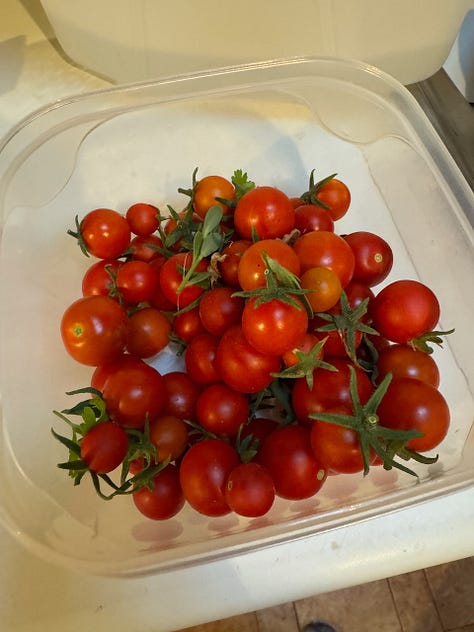
Next, the tomatoes. I haven’t been able to harvest any of the bigger tomatoes yet, but a constant stream of cherry tomatoes is asking to be picked. They’re not as sweet as the ones I grew on our balcony in California, and their skin is thicker. Not sure if this is an adaptation to the local conditions (tough soil, tough wind) or just the cultivar. But delicious nonetheless. I put up some support for the tomatoes but haven’t pruned them too heavily, thinking that with the strong wind, it might be nice for the plant to have some extra leaves to filter. But most of the leaves are almost constantly curled, even after deep watering and even on gray days. So it’s either a reaction to the wind or some kind of fungal disease. Giannis from Kalivari told me not to let them grow too far vertically because of the wind, and I of course decided to experiment with vertical support anyway. Perhaps the curled leaves are my just reward.
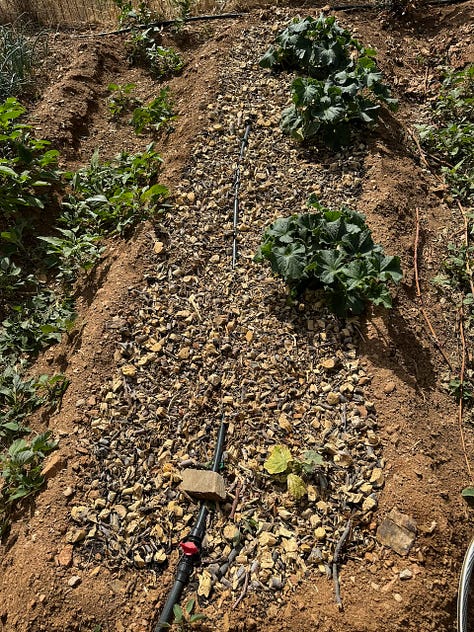
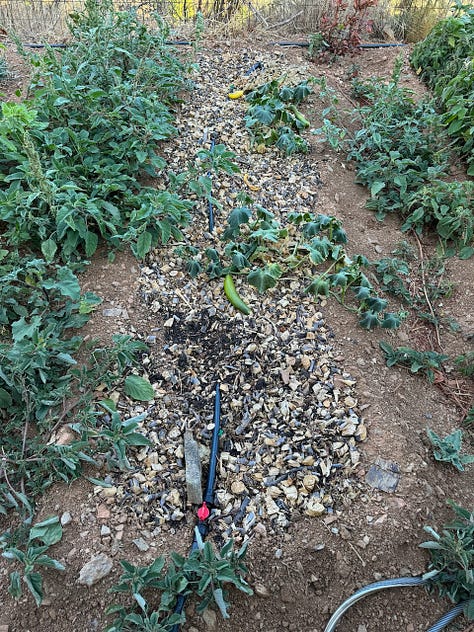
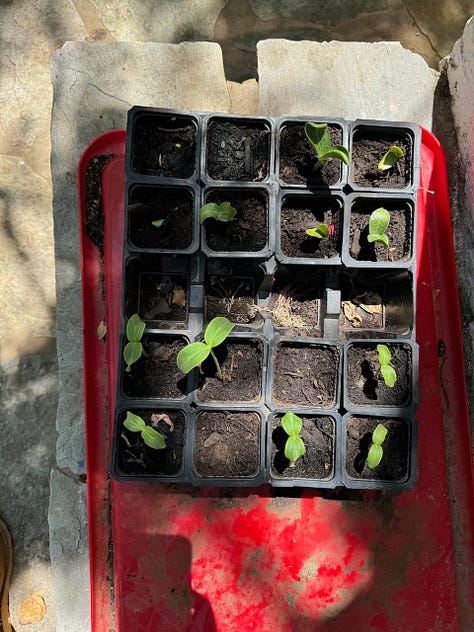
I expected the cucumbers to do better than they did. They produced a number of good fruits, but then they succumbed to, I suspect, a combination of sunburn and fungal disease, perhaps because they’re directly on the wood chips. Giannis gave me locally adapted cucumber seeds, so I just replanted the bed with the new seedlings. This may well turn out to be a mistake if there was indeed fungal disease that will now immediately infect the new seedlings as well. We’ll see. In the meantime, Maria and Giannis have been supplementing my still totally reasonable cucumber harvest with their abundant and giant local cucumbers. If mine turn out like theirs, I will certainly be saving seeds for next year!

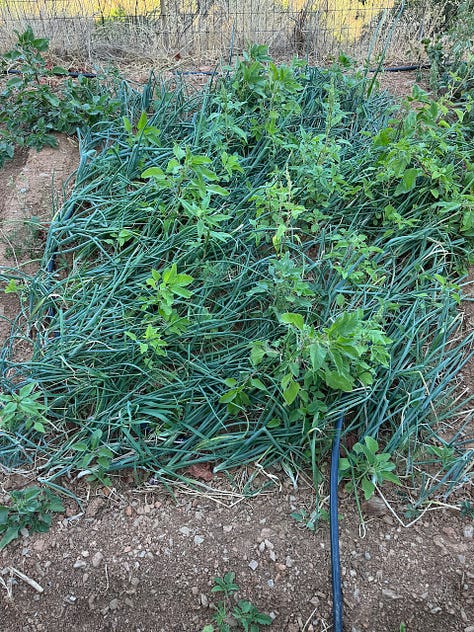
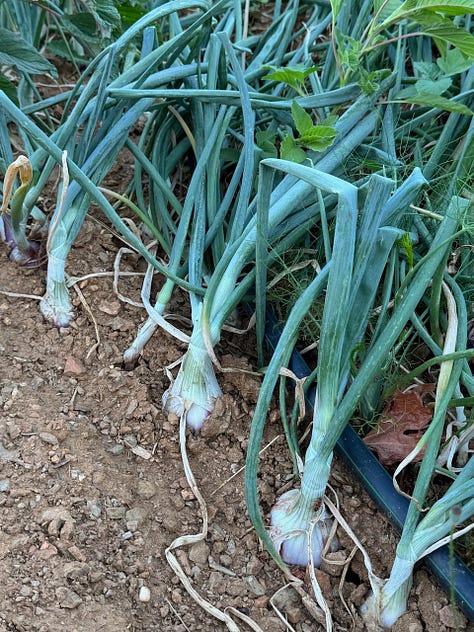
The onions were planted from sets in narrow furrows. I’d never grown onions before and they were so satisfying to watch explode out of the ground — interspersed with the obligatory vlita, of course. The tops have started toppling over in recent days, though most likely just from the wind, not because they’re ready. Once the tops are more dried out, it’s time to take them out and cure them. And of course decide what goes in the bed next!

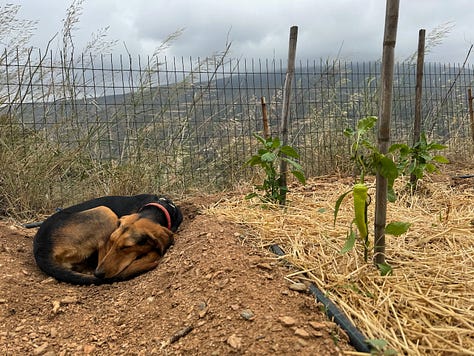
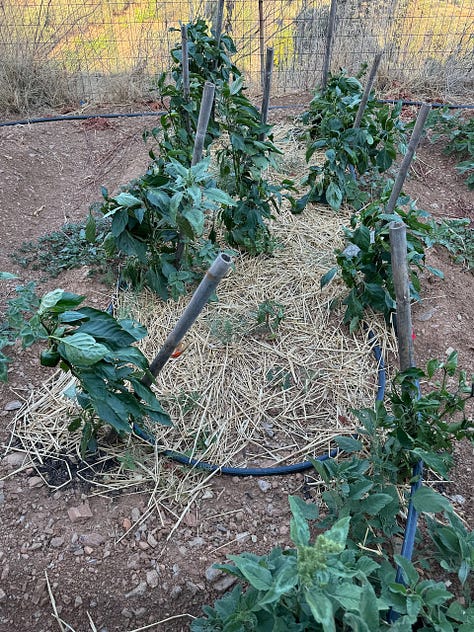
The pepper bed was the first to get mulched, with straw instead of chips. I’ve been surprised at how little of the mulch blows away in our strong winds. But it’s definitely a thinner layer now than it was at the start, and the ground underneath is starting to compact, so I should supplement soon with wood chips. Once the layer started to thin, the weeds of course came up. It’s nice when the causal arrows are this simple.
We planted both “fat” peppers and “long” peppers, as they were described to me when I bought them. After a few weeks of growing, it became clear that what I had acquired were bell peppers and banana peppers. Perfect. My sensitive Swiss palate can’t handle a lot of heat, but next year I’ll plant some spicy peppers as well, so we can try to recreate one of the only things I really miss about the US: proper Mexican food. In the meantime, preparing the abundant banana peppers the way you’d prepare shishito peppers — blistered, with nice salt and a bit of olive oil — makes for a delightful snack.
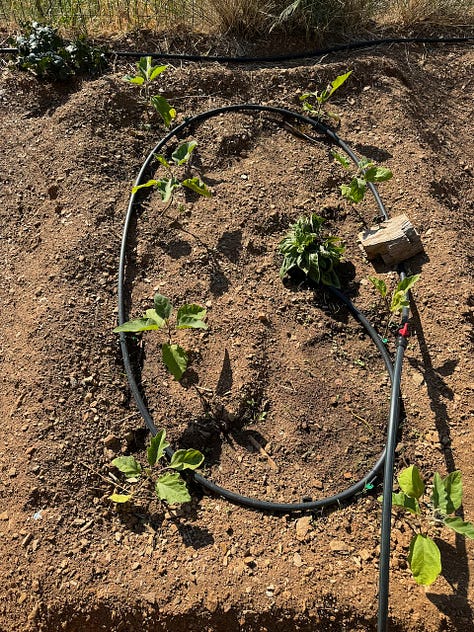
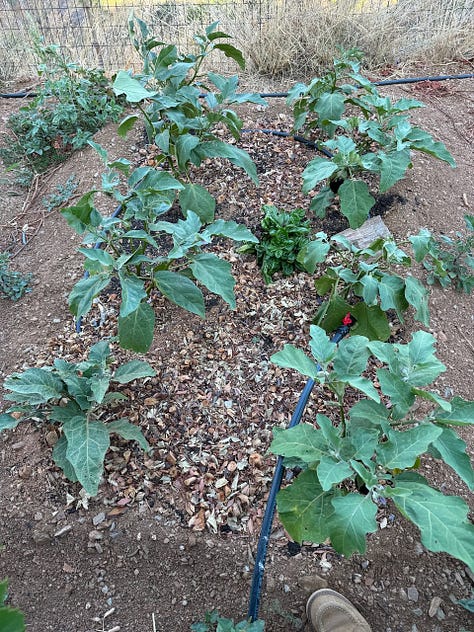
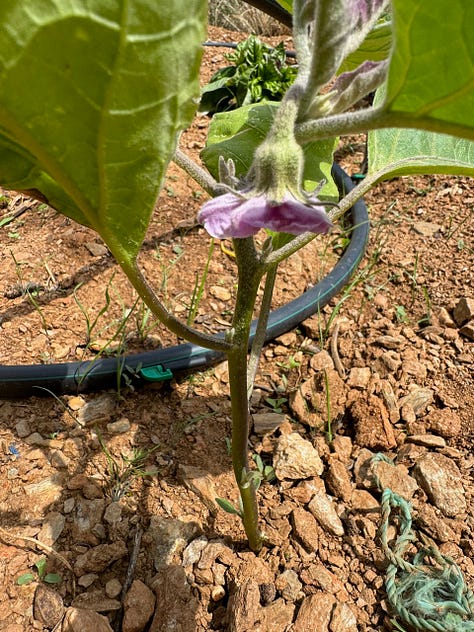
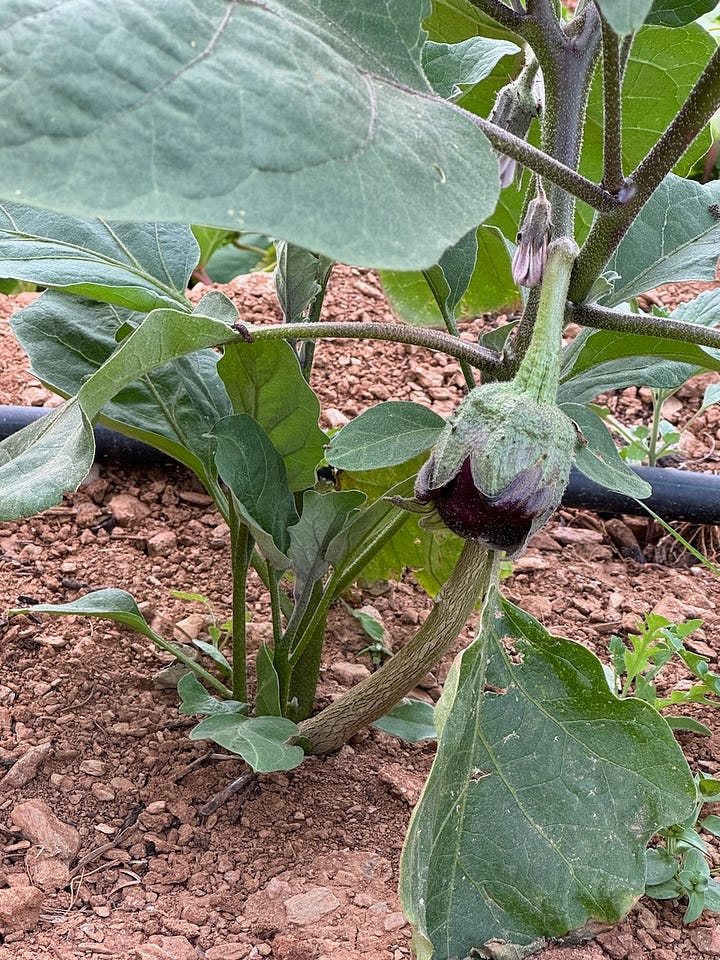
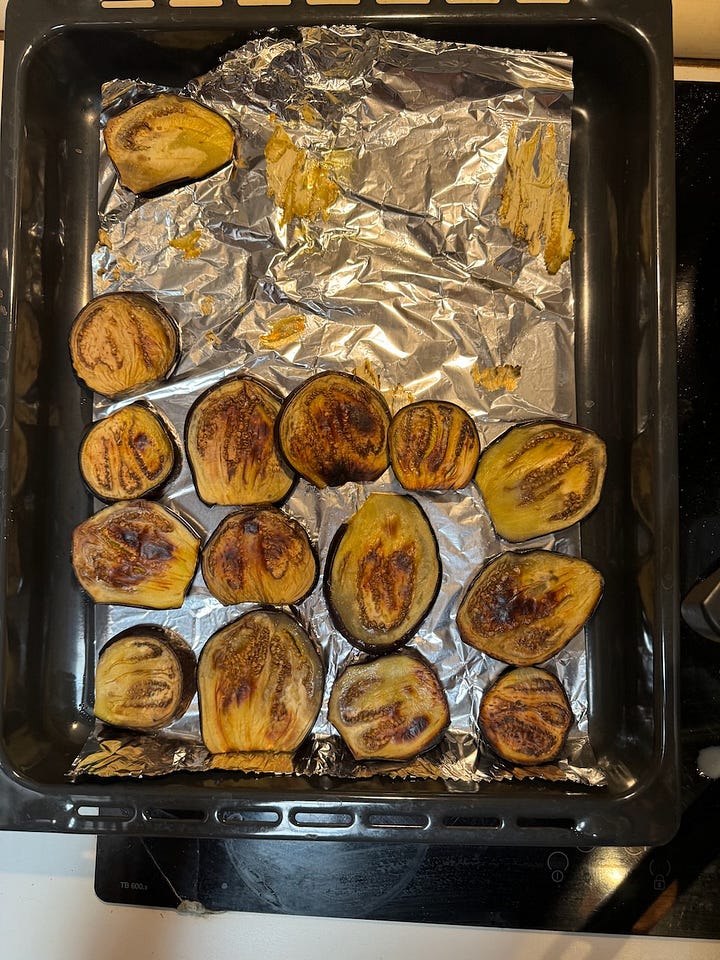
The resilience of the eggplants has been surprising. They were the ones who went for the longest time without mulch, but they’ve been churning out their beautiful flowers and fruit very consistently. Here, too, we planted fat ones and long ones, though the long ones are unfortunately suffering from some blossom end rot. In a harvesting frenzy one day I decided to make moussaka from all the eggplants. An excellent idea.
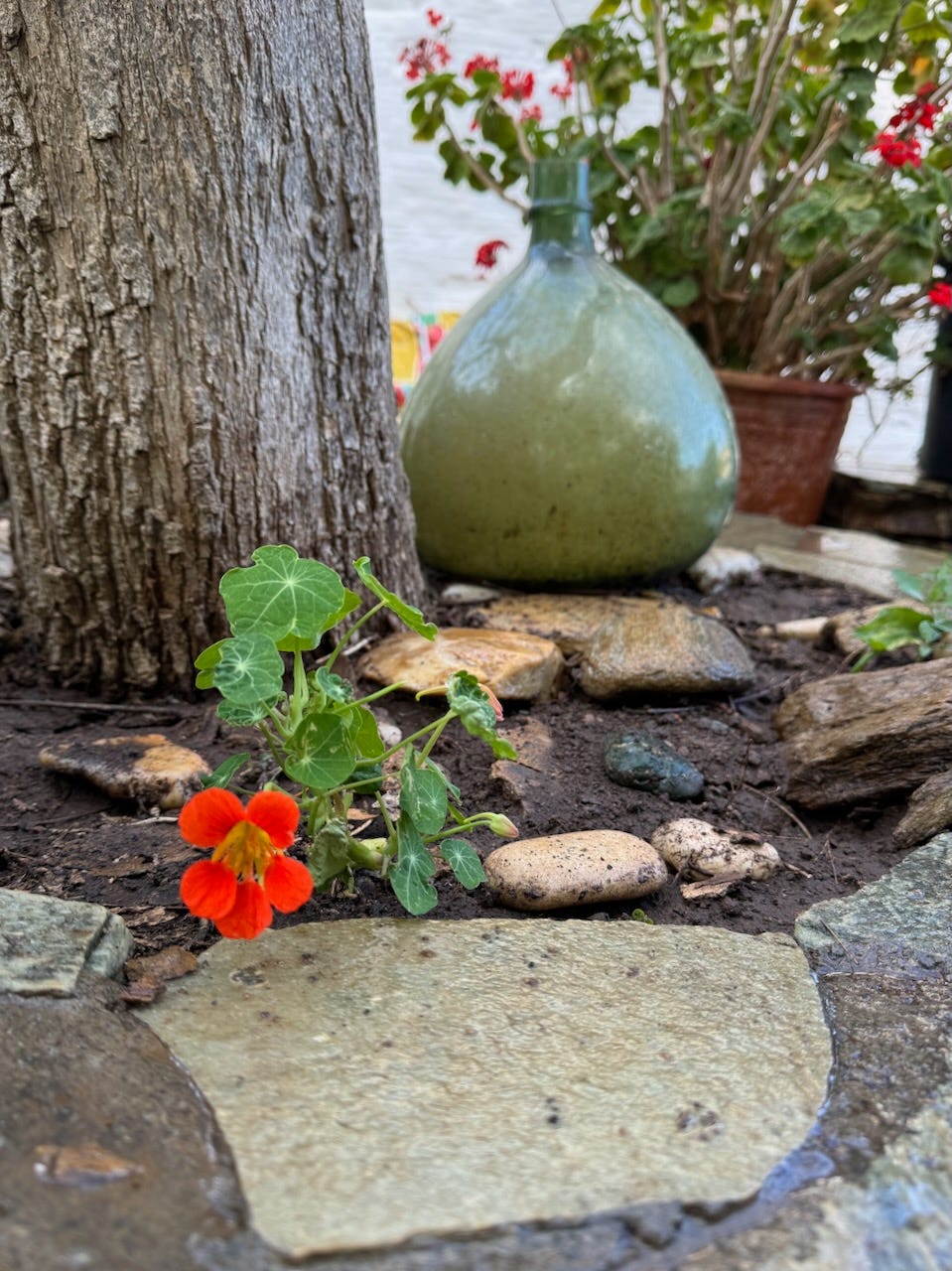
So far, we haven’t had too much trouble with pests, with the exception of the windbreak plants having their young canopies sometimes devoured by passing cicadas (I think). Not great for windbreak plants. Perhaps the reason we haven’t otherwise had too many pests is that we put various pest-repellent herbs in between and around the other plants. On the northernmost end of the terrace is a bed of rosemary and thyme, right next to a row of oregano. Since the wind predominantly blows from the north, the scent of these plants travels across the terrace. But just in case, there is basil interplanted with the eggplants, the tomatoes, and the peppers. All of this confuses the aphids and other bad guy bugs. I also tried nasturtiums, which are helpful to interplant because they attract bad bugs away from crops like tomatoes, in multiple places — in between the grapes above the planting terrace and next to the windbreak plants — but they just kept dying in the sun. Perhaps they need to be in partial shade here, or perhaps I should finally build the retractable shade cover for the terrace to protect it and all the other plants from the most intense of the summer sun.
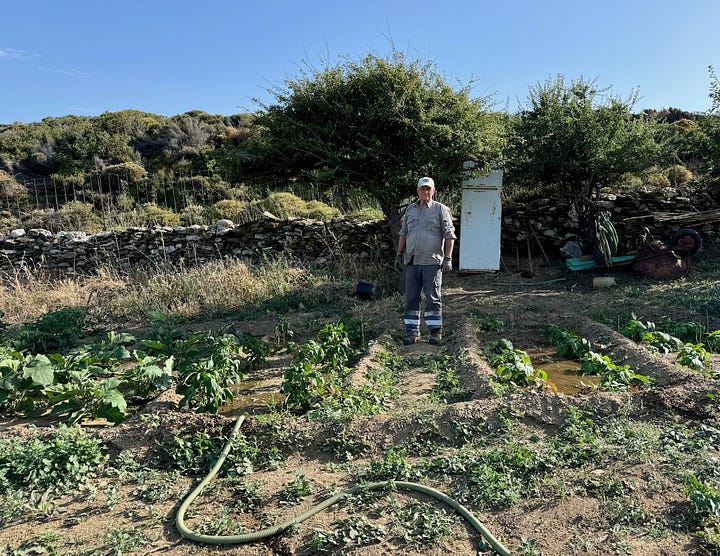
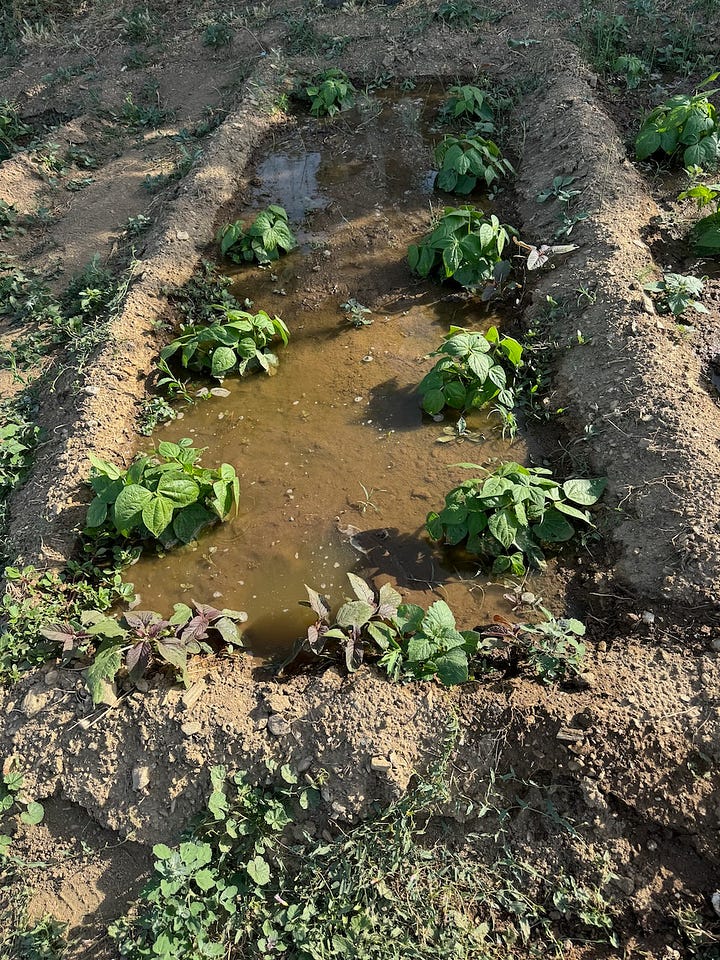
Overall, I’m very pleased with the annual vegetable garden so far! It’s a great feeling to go to the grocery store only to get milk, pasta, and other staples, and just walk right past the produce section. There is plenty to improve for the next go-around: changing the drip irrigation system (the emitters clog too easily, as everyone who I chose to ignore on the internet said); adding much more compost straight from the get-go (easier once I have my own and don’t have to buy it, more on that in another post); adding more mulch straight from the get-go; build better trellising systems; build a proper shade cover; integrate more pollinator-attracting flowers; help the windbreak establish itself by interplanting; and mulching the paths. Also: over everything looms the spectre of the dwindling water. It dominates all conversations with growers on the island, so we’ll take a water deep dive in a dedicated post soon…

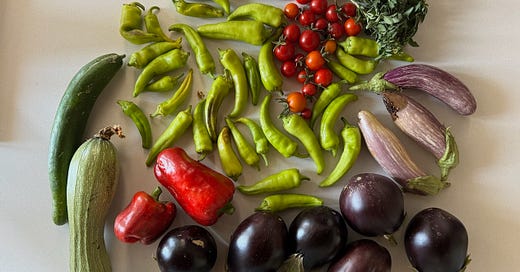




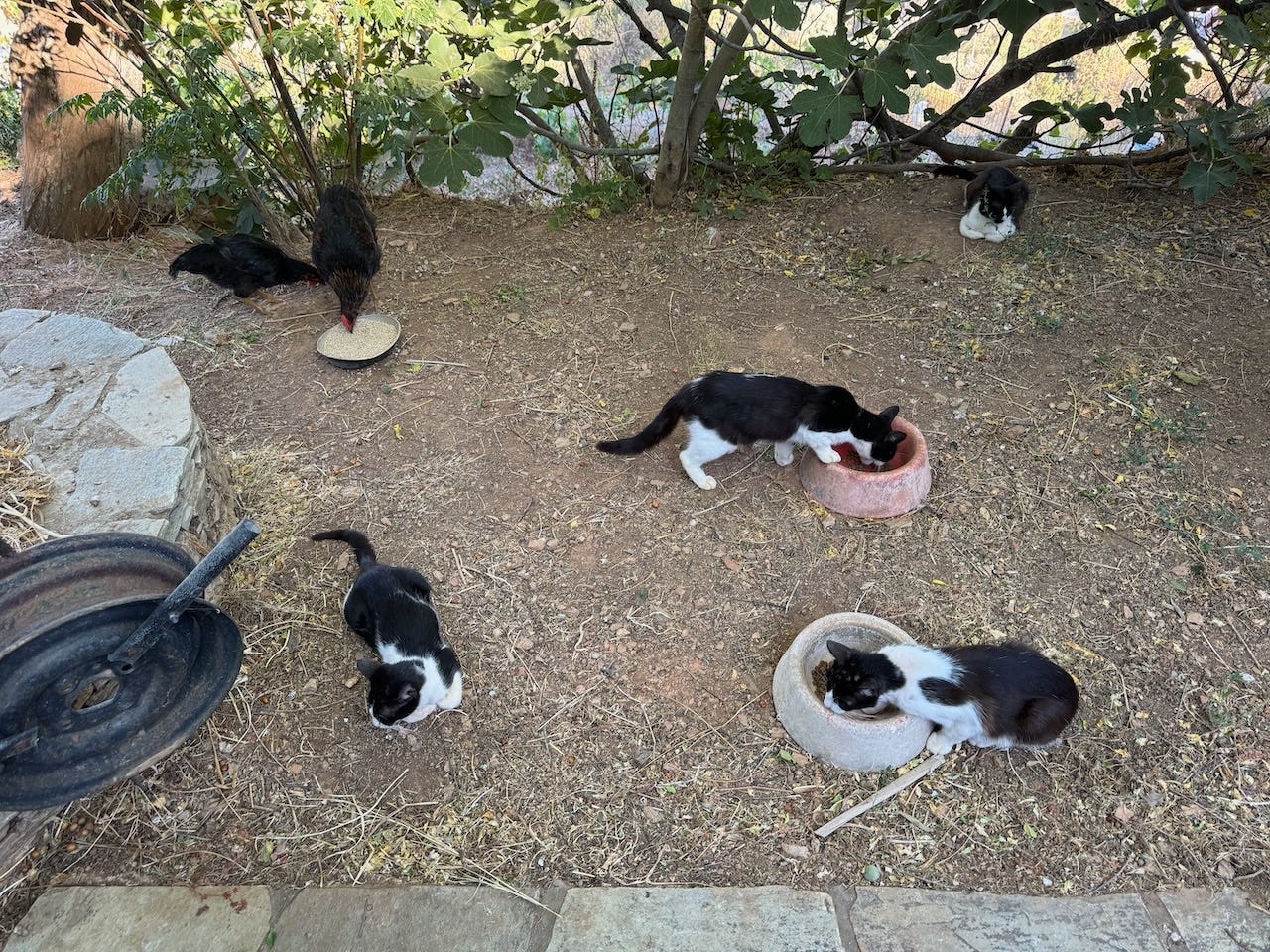
Judith, you can be proud of what you have achieved! Amazing! And for me as a humble gardener i have learnt a lesson: mulch mulch mulch- wood chopper, must look for somebody nearby to share that magical device. Well, next year i try to do better. And please don t stop sharing your experience and pictures, it is encouraging and helpful! And really love you story telling, entertaining too. Uff, next year is going to be tough...
Xx Benita
Glory be!!! Look at all that abundance. Just when I was thinking, "To hell with growing food, I'm going to stick with flowers," you came along and reenergized me. The trenches are interesting. I was just reading about an ancient Pueblo technique of making waffle-like depressions out of clay, something they had a lot of. The clay walls protected plants from the wind, gave roots some shade, and the clay bottom held water. The old ways are often the best. We seem to come up with some great advancement only to realize the country people have been doing it that way for generations.
Congratulations on a whole lot of really hard, fantastic work. You should be proud of yourself. Could you post a recipe for the stuffed zucchini? That looked amazing.
Lastly, the kittens are adorable.
Alice